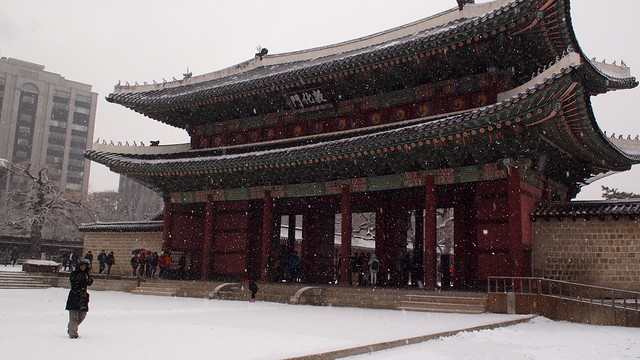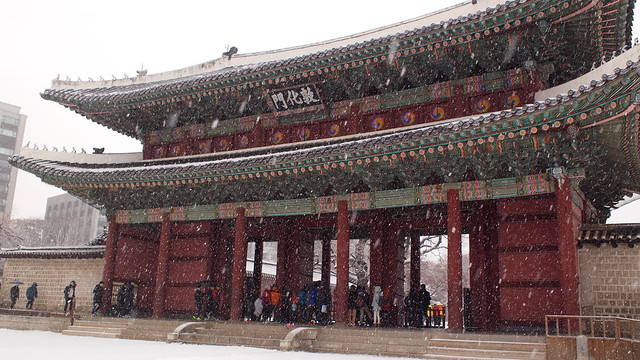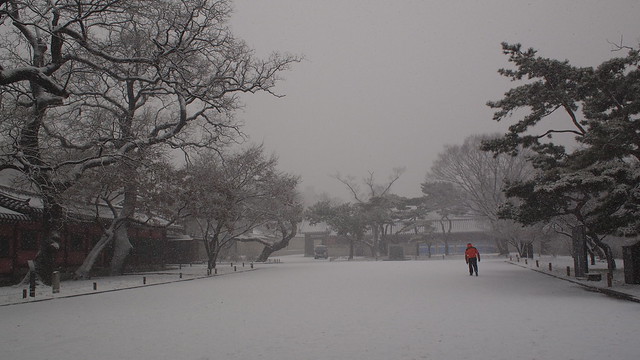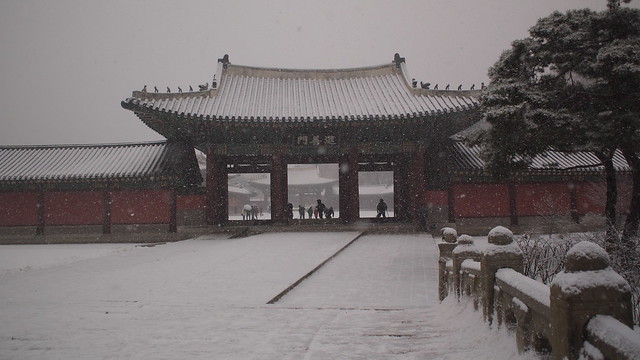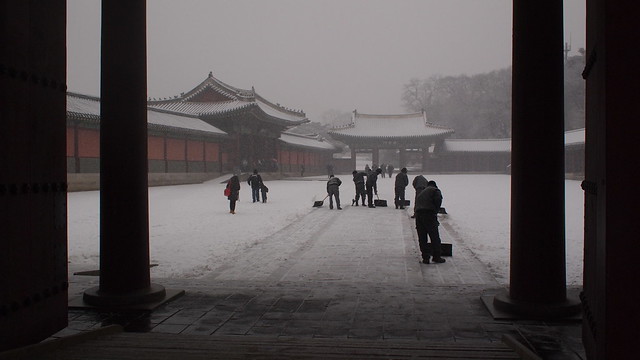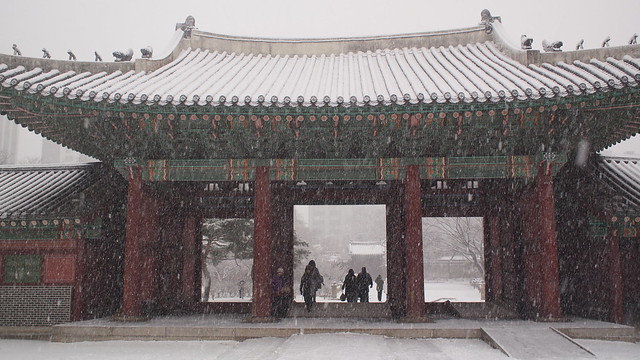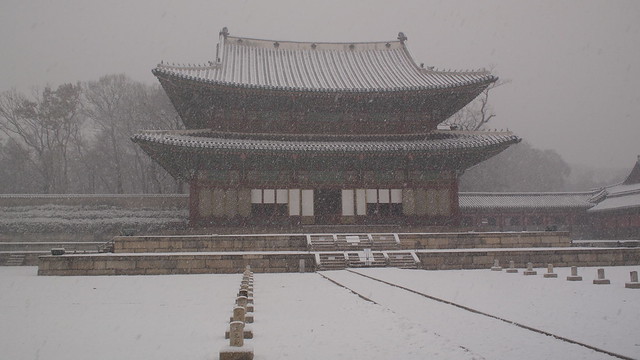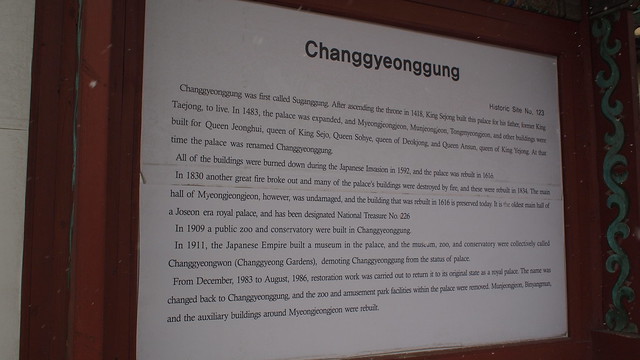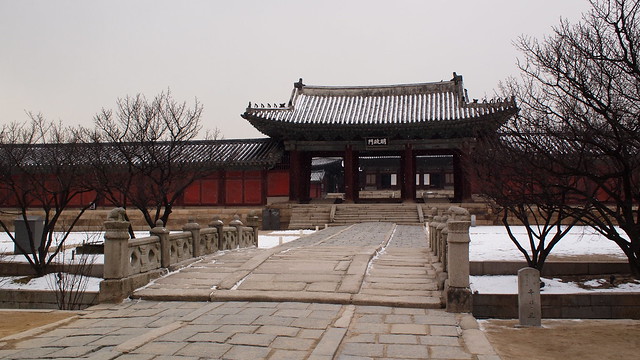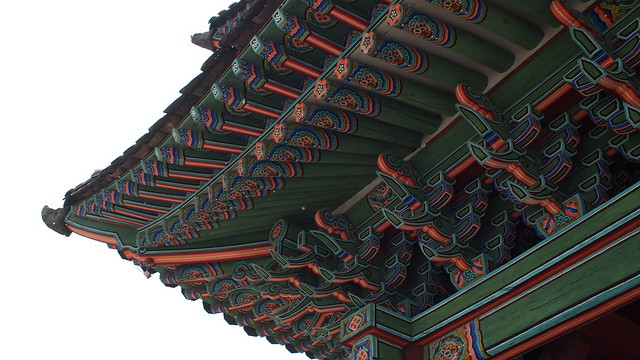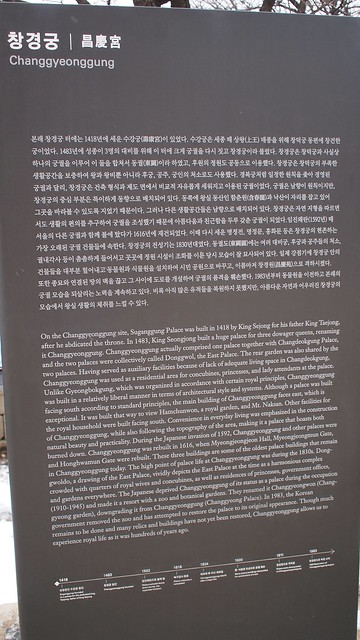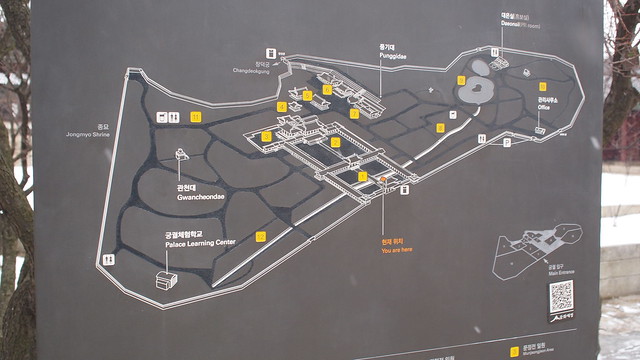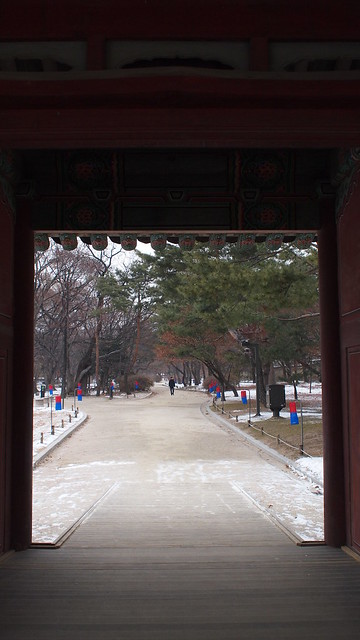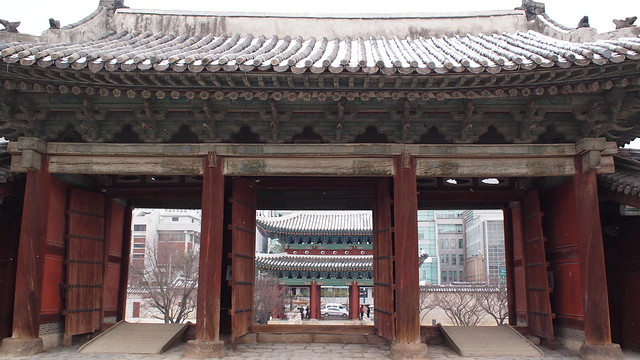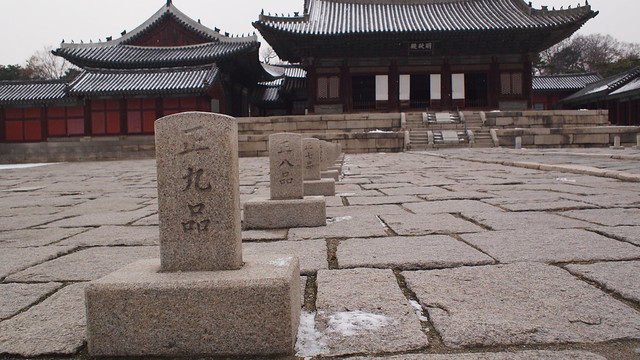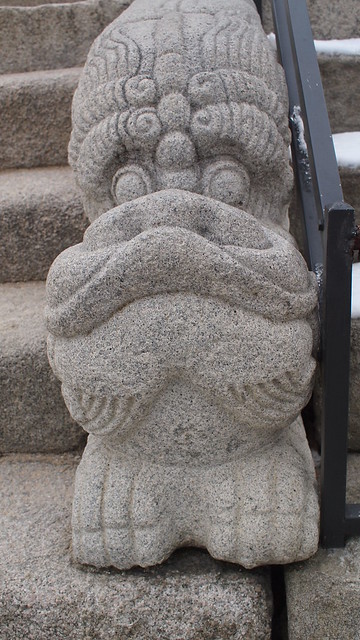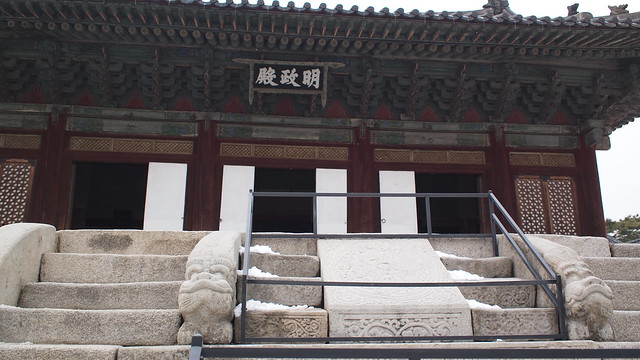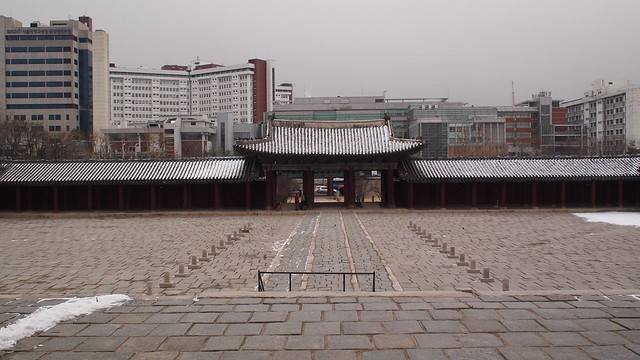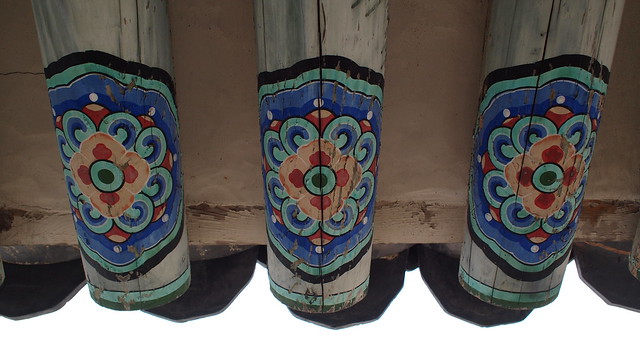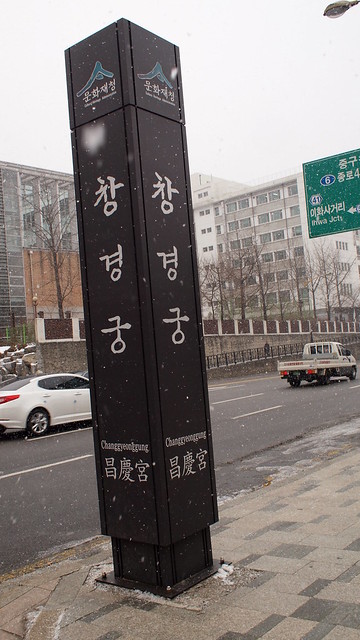The upside to the snow was that Changdeokgung blanketed with snow looks absolutely gorgeous. Of course, it also looks like tons of dandruff falling. But maybe that's just me.
I walked from Changgyeonggung to Changdeokgung, it is possible, but probably not advisable. I don't know if it was because I got lost (what's new?) or the snow made the walk miserable (yes, it was romantic, for all of 10 minutes).
Changdeokgung is the palace with the secret garden. I was contemplating if I should get a full ticket, which includes a tour of the secret garden, but I'm glad I didn't because my fingers went numb and froze and I just wanted to thaw somewhere (did I mention this was the first time I experienced this much snow?).
Literally meaning ‘The Palace of Prospering Virtue’, the verdant grounds of Changdeokgung Palace are arguably the nicest of all five palaces. Set flush within a large park in Jongno-gu, it is at times referred to as the East Palace given its location in respect to Gyeongbokgung Palace.Interestingly, it is reported that Changdeokgung was the favored palace among the many kings of the Joseon Dynasty and has since retained many traditional Korean elements dating from the Three Kingdoms Era – elements that were not taken into account during the construction of the neighboring buildings of Gyeongbokgung. One such notable difference is the fact that the architecture of Changdeokgung harmonizes beautifully with the surrounding nature without appearing intrusive or destructive in the process.The treasured secret garden of biwon is particularly beautiful. Replete with pavilions, ponds and wooded areas, the palace grounds of Changdeoksugung are wonderfully infused with all things natural, tucked deeply away amidst trees and draping foliage that buffer out the noise and commotion of the city nearby.
Getting There Take subway Line 3 to Anguk Station and get out at Exit 3. Changdeokgung Palace is open from 09:15~17:45 (April ~ October) and 09:15~15:45 (November ~ February). In March, visiting hours are from 09:15~16:45. Entry is permitted every 15 and 45 minutes past the hour. The palace is closed Mondays. Entry to the palace is only permitted with a guided tour. Visitors do not have to join the tour on Thursdays. Admission is 3,000 won. Source
Admirable helpers hard at work so that snow doesn't have a chance to become ice.
Here's an Instagram shot that is closer to how romantic the palace feels, if you are not trembling in the cold, and how hard it was to get a clear shot of the palace as above.
Machiam dandruff..
Love/Hate snow.
